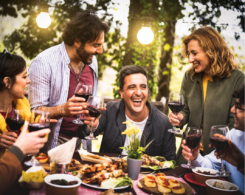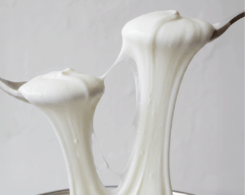Powerful and potent. Some choose ylang ylang oil for its soothing and relaxing properties. Others look to it for its romantic, sweet floral aroma.
Like many perfumery natural ingredients, ylang ylang has traveled a long way. The Filipino name ilang-ilang evokes the image of these “suspended bunches” of flowers fluttering in the wind. Discovered in Malaysia in 1740 by botanist Pierre Poivre, ylang ylang was distilled for the first time in the Philippines in 1860 by a sailor named Albert Schwenger who was charmed by their captivating fragrance.
This beautiful star-shaped, fragrant flower was introduced to Madagascar in 1920. It flourished in its rainforests and neighboring islands, especially in the small and exotic island of Nosy Be off the northwest coast of Madagascar. The island of Nosy Be is also known as the “L’île Aux Parfums” or “Perfume Island,” due to the ylang ylang plantations that one can see throughout the island, and the flowers that fill the air with a sweet and intoxicating fragrance.

The scent of ylang ylang, also known as “the flower of all flowers,” has long been considered a powerful aphrodisiac. Women in this region traditionally hide the flowers in their hair and use them to scent bed linens. It’s generally recognized as one of the most sensual ingredients in the perfumer’s palette. In Asia, the flowers have long been valued for their aphrodisiac properties.
The flowers blossom all year round. The best time to produce the valuable essential oil actually is at its most abundant months in the hot and humid season when it rains at night and the sun shines brightly every day. The color of the petals evolves from light green to bright yellow, with a spot of carmine red in the center, a sign for the pickers of a mature flower. At this stage, the flowers exhale their purest fragrance. As soon as dawn breaks, women begin picking the flowers. Together they work to the rhythm of songs honoring this ancestral flower. Its blooms are so delicate that the women must pick them by hand at dawn and bring to distillation within two hours.
Ylang Ylang’s Sustainability Story
“Local workers produce ylang ylang oil continuously throughout the year. It creates a stable income for them. We work with complete essential oil to get the full profile of the flower and avoid any waste”, Dr. Fanny Rakotoarivelo, Research and Development, Symrise Madagascar says.
We Care About People
Our long-held commitment to responsible sourcing means we strive to improve the quality of life in farming communities. To help networks of farmers in Madagascar who face economic low times during vanilla’s off season, we launched a crop diversification project with ylang ylang and other fragrant and aromatic ingredients.
Positive Environmental Practices
We work with local farmers who practice organic, circular farming methods to obtain high quality oil. Using the complete fraction creates a stable supply chain and reduces waste. We support the transfer of savoir-faire of our independent partner farmers, based in Nosy Be, who combine generations of expertise to optimize the ylang ylang production.

“Before discovering this grade, I was not a big fan of Ylang Ylang due to an old fashioned spicy and animalic facet. Now, I can hardly live without it. It’s warm, solar, floral, luminous…facets bring richness to my creations.” — ALEXANDRA CARLIN, PERFUMER
“Exotic islands, lush rainforests, blazing sunsets at dusk – the paradisiac essence of Nosy Be captured in an enticing fragrance. The creamy yellow blossoms of Ylang Ylang, reveal its rich and intense facets: narcotic white floral, fruity banana, with slightly strawberry, solar and cinnamon notes.” — SUZY LE HELLEY, PERFUMER








